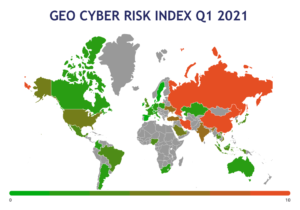The shift to remote work forced by the pandemic has accelerated on-going technological changes. The result: a surge in endpoint devices, operating systems and data streams for most organizations. Attack surfaces have expanded rapidly. An ever-growing number of threat actors seek to exploit existing vulnerabilities, deploy tools of increasing sophistication, and use new ploys to gain access. CISOs and security teams should try to reduce attack surfaces where possible. However, the necessity of remote work still demands that companies find a way to manage added risk from larger attack surfaces compared to when operations were mainly on-site. Security data discipline provides an approach to accommodate expanding attack surfaces while empowering security teams with the right information to stop attacks more efficiently and accurately.
The main issue with expanded attack surfaces lies in the volume and complexity of security data. As the number of devices, operating systems and tools used by employees have increased, so too has the volume and complexity of data streams that security teams receive. Sourcing and analyzing the right data remains the crux of detecting and responding to cyber attacks. However, data created by monitoring expanded attack surfaces is often unstructured, vendor-specific and lacks proper context. This situation produces large, unfiltered data lakes that return high volumes of false positives when processed by security tools. These unfiltered data lakes make it difficult for security teams to find real threats, and companies can also face high costs from security tools that require volume-based fees for data parsing and retention.
Security data discipline reduces the mass of data and provides security teams with the specifics necessary to protect networks. Security data streams are centralized into a unified pipeline. Data is parsed, extracted and transformed using intelligent filters before being leveraged by security tools or dropped as not useful. This approach seeks to establish the right data is retained, reducing data indexing and storage costs. As low-quality data gets filtered out, the data retained can be structured and enriched with data lookups, geolocation, API integration, and more. The process allows security teams to maintain a comprehensive view of data flows through a dashboard-style visibility. Real-time custom alerts for failure states like dead feeds or cost spikes can also be included to improve security teams’ response time.
Effective threat detection relies on good attack surface visibility. Reducing and filtering the flow of data to your security operations can provide clear optics of your attack surface which will help with identifying real malicious activity. Security data discipline achieves this objective while also allowing companies to leverage new technologies to empower employees to stay productive. Implementing data discipline enables companies to maintain lean and efficient security operations, and significantly enhances security teams’ ability to protect networks from attack. Learn more about how Next Peak can help improve your security operations through security data discipline here.







